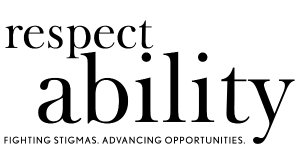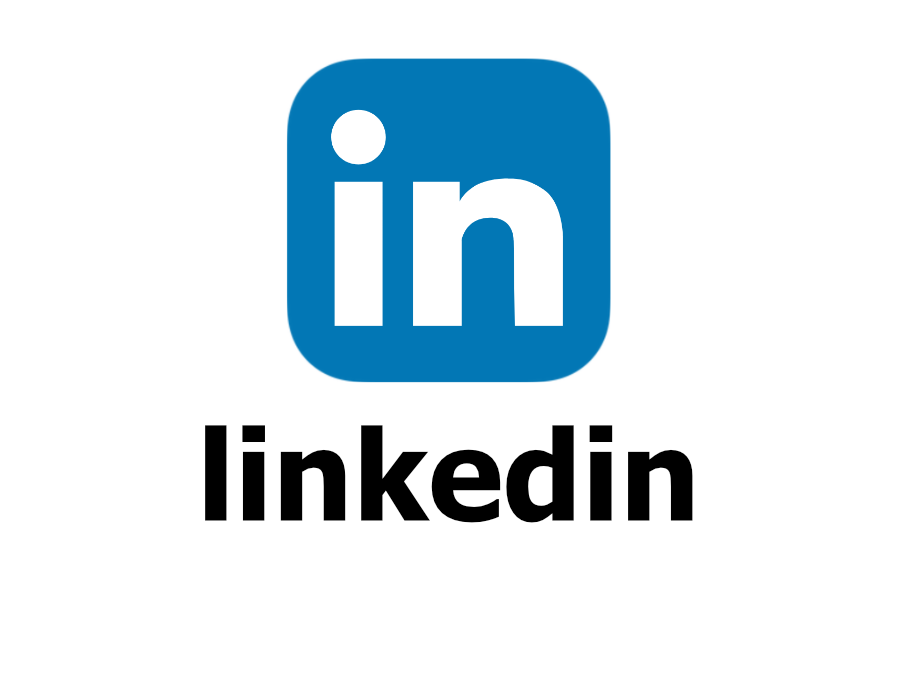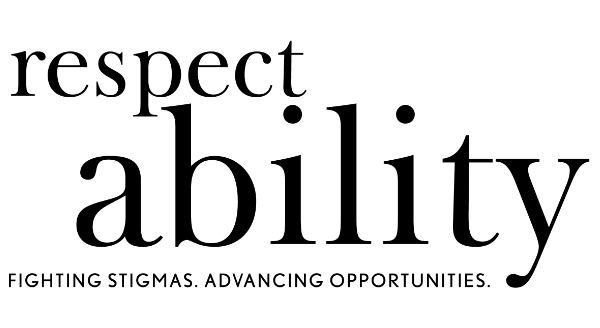Diversity, equity, equality and inclusion is more of a journey than a destination. We can always learn more to fight implicit bias and to advance progress. Below are many helpful resources that you can use in your journey.
Reference Tools:
- Between the World and Me – In a profound work that pivots from the biggest questions about American history and ideals to the most intimate concerns of a father for his son, Ta-Nehisi Coates offers a powerful new framework for understanding our nation’s history and current crisis.
- Blindspot: Hidden Biases of Good People – In this book, Mahzarin R. Banaji and Anthony G. Greenwald explore the hidden biases we all carry from a lifetime of exposure to cultural attitudes about age, gender, race, ethnicity, religion, social class, sexuality, disability status, and nationality.
- Characteristics of White Supremacy Culture – The characteristics of white supremacy culture which show up in organizations are listed on this page.
- Feminist Theory: From Margin to Center – When this book from Bell Hooks was first published in 1984, it was welcomed and praised by feminist thinkers who wanted a new vision. Today, the blueprint for feminist movement presented in the book remains as provocative and relevant as ever. Written in hooks’s characteristic direct style, Feminist Theory embodies the hope that feminists can find a common language to spread the word and create a mass, global feminist movement.
- Racial Equity Tools Glossary – This glossary was created because “the lack of a common understanding of even the most frequently used words in any discussion on race can easily cause misunderstanding and confusion, and often lead to controversy and hostility.”
- White Like Me: Reflections on Race from a Privileged Son – Using stories from his own life, Tim Wise demonstrates the ways in which racism not only burdens people of color, but also benefits, in relative terms, those who are “white like him.” He discusses how racial privilege can harm whites in the long run and make progressive social change less likely.
- “Why Are All The Black Kids Sitting Together in the Cafeteria?”: A Psychologist Explains the Development of Racial Identity – In this book, Beverly Daniel Tatum, a renowned authority on the psychology of racism, argues that straight talk about our racial identities is essential if we are serious about enabling communication across racial and ethnic divides.
- Just Mercy: A Story of Justice and Redemption – This book from Bryan Stevenson is “a powerful true story about the potential for mercy to redeem us, and a clarion call to fix our broken system of justice.”
- The Big Eddy Club: The Stocking Stranglings and Southern Justice – This book by David Rose is an “exposé of race, injustice, and serial murder in the Deep South—Midnight in the Garden of Good and Evil with an investigative edge. Over eight bloody months in the mid-1970s, a serial rapist and murderer terrorized Columbus, Georgia, killing seven affluent, elderly white women—almost all members of the Big Eddy social club for the town’s elite.”
- The New Jim Crow – This book from Michelle Alexander is a stunning account of the rebirth of a caste-like system in the United States, one that has resulted in millions of African Americans locked behind bars and then relegated to a permanent second-class status—denied the very rights supposedly won in the Civil Rights Movement.
- The Warmth of Other Suns: The Epic Story of America’s Great Migration – In this book, Isabelle Wilerson “chronicles one of the great untold stories of American history: the decades-long migration of black citizens who fled the South for northern and western cities, in search of a better life.”
- Equity In The Center Resources – Equity in the center envisions a future where nonprofit and philanthropic organizations adopt a Race Equity Culture focused on proactive counteraction of social inequities.
- Intersections Between Racism and Ableism: Disability & Philanthropy Forum -This resource offers insights and resources to better understand the strong connections between racism and ableism.
- Racial Equity Resource Guide from Kellogg Foundation – Includes glossary of racial equity terms and discussion of structural racism.
- Transforming Organizational Culture Assessment Tool – The TOCA tool can be a helpful instrument for deepening internal organizational work on advancing racial equity, by specifically addressing white culture.
- AAPIP Resources – AAPIP developed this Resource Directory to mobilize the philanthropic sector towards meaningful action in the midst of heightened violence and hate targeting Asian American communities.
Training/Guides
- Interaction Institute for Social Change Trainings – IISC’s trainings provide participants with the opportunity to learn and practice the skills and tools of collaboration so that they can design meetings, build and run organizations and networks with greater social impact.
- Google’s Unbiasing Guide – “Making the unconscious conscious will help you make more objective decisions, facilitate inclusive interactions, and create opportunities. Begin unbiasing with education, accountability, measurement, and more.”
- Hidden Bias More Subtle and Difficult to Recognize than Bias of Decades Past – Dana Wilkie compiles advice on how to prevent hidden biases from getting in the way.
- The People’s Institute for Survival and Beyond – The People’s Institute for Survival and Beyond (PISAB), is a national and international collective of anti-racist, multicultural community organizers and educators dedicated to building an effective movement for social transformation.
- Race Forward – Race Forward’s Building Racial Equity series is a collection of interactive trainings for those who wish to sharpen their skills and strategies to address structural racism and advance racial equity. Unlike “diversity trainings” which primarily focus on interpersonal relations and understanding, the Building Racial Equity trainings emphasize how to challenge and change institutional racial inequities.
- Racial Equity Institute – REI does many different trainings for individuals/organizations on a broad spectrum of learning and understanding. The workshops speak to the historical context of race/racism in this country and are designed to help individuals and institutions practice reframing problems and determining solutions with a racial equity lens.
- Service Never Sleeps – Whitney Parnell’s organization that does terrific allyship workshops for both white allies and allyship in an intersectional context.
- What is Police Violence? – Autistic Self Advocacy Network with partners created this booklet that provides accessible information on topics including anti-Black racism and the police, police violence in the U.S., police violence and disability, and what we can do about police violence.
- Operationalizing Equity – This brief report is meant to capture where the Annie E. Casey Foundation was the beginning of 2017 in their work on equity. It is meant to serve as a resource and reference point for other organizations that share our desire to embrace equity as a core value reflected in all elements of the institution’s programs and operations.
- Paying Attention to White Culture and Privilege: A Missing Link to Advancing Racial Equity – This journal article discusses tools for tackling white privilege and white culture: “creating a container with intentional group norms, exploring accumulated racial advantages and disadvantages, reflecting on white culture, and caucusing by racial identity.”
- Video: Putting Racism on the Table: john a. powell on Structural Racism – In the first session of the Washington Regional Association of Grantmakers’ Putting Racism on the Table series, John A. Powell, Professor of Law and Professor of African-American Studies and Ethnic Studies at the University of California, Berkeley, discusses structural racism.
Articles/Interviews/Talks
- Demos’ Racial Equity Transformation – This is a report on how Demos transformed itself to be a race equity organization, including tactical actions that Demos took.
- Inside America’s Auschwitz – This article written by Jared Keller for Smithsonian Magazine discusses the opening of Louisiana’s Whitney Plantation slavery museum. The museum “offers a rebuke — and an antidote — to our sanitized history of slavery.”
- Interview with John A. Powell – This interview transcript comes from PBS’s series “Race: The Power of an Illusion”. Powell is a nationally recognized scholar on race, poverty, and regional equity.
- It’s Time To Call Out ‘Nice Racists’ And Their White Fragility – This blog post written by Christy DeGallerie points out that “Racism isn’t always angry and mean. It’s subtle, mild and, at times, friendly.”
- Podcast: Bryan Stevenson Talks to David Remnick About the Legacy of Racial Terror – In this New Yorker Podcast, lawyer and activist Bryan Stevenson discusses his view that “Americans have civil rights…What we lack is a sense of shame.”
- Race to Lead Report – To increase the number of people of color leading nonprofits, the sector needs a new narrative about the problem and new strategies to address it. Nonprofits have to transfer the responsibility for the racial leadership gap from those who are targeted by it (aspiring leaders of color), to those governing organizations.
- TED Talk: How to overcome our biases? Walk boldly toward them – Diversity advocate Vernā Myers looks closely at some of the subconscious attitudes we hold toward out-groups. She makes a plea to all people: Acknowledge your biases. Then move toward, not away from, the groups that make you uncomfortable. In a funny, impassioned, important talk, she shows us how.
- The Case for Reparations – Ta-Nehisi Coates writes in The Atlantic that “Until we reckon with our compounding moral debts, America will never be whole.”
- The Master’s Tools Will Never Dismantle the Master’s House – This essay from Audre Lorde discusses the importance of intersectionality and inclusiveness.
- Unrealized Impact – Education data that dives deep into data on what DEI policies and practices that are being implemented within education organizations.
- Why do my co-workers keep confusing me with other people? Because I’m Asian. – This piece was written by Iris Kuo and was featured in the Washington Post. Kuo writes that “All my life I’ve been mistaken for other people of my race. It’s a degrading and thoughtless error that boils away my identity and simplifies me as one thing: ‘that Asian.'”
- YouTube Series: Every Single Word – These videos, as the titles imply, showcase every single word spoken by a person of color in various movies and demonstrate the need for increased representation.
- A Letter From Young Asian-Americans To Their Families About Black Lives Matter – This podcast from NPR discusses “Letters for Black Lives,” a project by Christina Xu which argues that “Asian-Americans should also care about police violence against black Americans.”
- A Shattered Foundation: African Americans Who Bought Homes in Prince George’s County Have Watched Their Wealth Vanish – This Washington Post report discusses how the residents of Prince George’s County, Maryland “have lost far more wealth than families in neighboring, majority-white suburbs. And while every one of these surrounding counties is enjoying a strong rebound in housing prices and their economies, Prince George’s is lagging far behind, and local economists say a full recovery appears unlikely anytime soon.”
- Affluent and Black, and Still Trapped by Segregation – This New York Times article argues that “income alone cannot explain, nor would it likely end, the segregation that has defined American cities and suburbs for generations.”
- Black Lawyers Are Likely to Face Harsher Scrutiny than Their White Counterparts – Lisa Wade writes that “The old saying is that minorities and women have to work twice as hard for half the credit. This data suggests that there’s something to it.”
- Black Montgomery Residents in Maryland Reveal the Racist Realities of the Progressive County’s Past – Taylor Gordon writes in the Atlanta Black Star that Montgomery County, Maryland “is often praised for what it seems to be today while many blissfully fail to acknowledge the years of struggle and oppression that came before the county was welcoming to Black faces.”
- Housing Bias Outlasts Ruling in a Long Island Village – This New York Times article discusses a Federal Appeals Court Ruling which stated that “Garden City, a wealthy village where 1.2 percent of the residents were black in 2010, had violated federal antidiscrimination law by rezoning land specifically to block multifamily housing — and the potential for minorities to move in.”
- How Racial Covenants Shaped D.C. Neighborhoods – This American University radio program argues that “the impact today of policies that created and reinforced segregation can’t be overstated.”
- Rebuilding Equity in Prince George’s Will Take Some Work – This Washington Post column discusses home equity in Prince George’s County, Maryland, the nation’s highest-income majority-black county.
- Seeing White Podcast – This fourteen part documentary podcast discusses issues of whiteness. It addresses questions like “Where did the notion of “whiteness” come from?” and “What is whiteness for?”
- Segregation and Concentrated Poverty in the Nation’s Capital – This Brookings Memo says that “Racial segregation has been declining over the last 50 years within the largest metropolitan areas. But there are exceptions to this rule; one of those is the nation’s capital. In the District of Columbia there remains a stark, persistent, white-black racial divide.”
- The House That Racism Built – This is a video from the Washington Regional Association of Grantmakers’ 2015 Annual Meeting.
- The Science of Equality – This report by the Perception Institute was released in the fall of 2014. It discusses “the social science that can help us understand the day-to-day dynamics of race and how to alter the circumstances that too often culminate in tragedy.”
- The Unbending Arc: America’s Race Gap is Stuck – Richard V. Reeves writes that “Recent events have shone a light on the black experience in dozens of U.S. cities. Behind the riots and the rage, the statistics tell a simple, damning story. Progress toward equality for black Americans has essentially halted.”
- Understanding Central American Migration – “This memo aims to inform the current debate surrounding the sharp increase in unaccompanied child migrants, particularly from Central America.
- 272 Slaves Were Sold to Save Georgetown. What Does It Owe Their Descendants? – This New York Times article says that “At Georgetown, slavery and scholarship were inextricably linked. The college relied on Jesuit plantations in Maryland to help finance its operations, university officials say.
- Racism and Ableism – AAPD – Isabella Kres-Nash says that “Racism and ableism are often thought of as parallel systems of oppression that work separately to perpetuate social hierarchy. Not only does this way of looking at the world ignore the experiences of people of color with disabilities, but it also fails to examine how race is pathologized in order to create racism. Meaning that society treats people of color in specific ways to create barriers, and these poor conditions create disability.”
- Implicit Bias and Its Role in Grantmaking – John A. Powell argues that philanthropy must “move us toward greater inclusion and fairness – and that those in philanthropy realize their own susceptibility to implicit bias.”
- Inequality, the Ford Foundation, and Humility – This article in NonProfit Quarterly discusses Darren Walker’s announcement in 2015 that the Ford Foundation would “shift its programming to focus exclusively on grantmaking that addresses inequality.”
- Nonprofits: Equity Must Begin Within – Paul Schmitz writes in the Huffington Post that “our organizations and collective efforts must begin by looking inward, using an ‘equity mirror’ to examine our own composition, culture, and policies that reinforce and perpetuate societal disparities. To do equity, we must also be equity.”
- Philanthropy Must Understand Racism Is Not Dead – In the Chronicle of Philanthropy, Tamara Copeland writes that “We believe that racism is rarely acknowledged or discussed by members of the public or within philanthropy. And we believe that until that silence ends, our region, and our country, won’t be able to take the steps needed to end racial inequities.”
- Putting Racism on the Table – This is a learning series that many senior leaders at prominent nonprofit and philanthropic organizations have gone through that have helped individuals in their personal growth around topics of structural racism, implicit bias, whiteness and privilege, etc. This has been a huge success in many respects and is highly recommended.
- 9 Ways Foundations Can Help Men and Boys of Color – This article from the Chronicle of Philanthropy says that “foundations must play a greater role in dealing with some of the toughest issues facing America.” The article is available only to subscribers.
Do you know other people or nonprofit organizations that should be included?
Contact our Senior Director for Talent, Culture, and Training, Graciano Petersen, at GracianoP@RespectAbility.org.
More Resources You Can Use
- Webinars
- Disability Training and Consulting Bureau
- African Americans
- Asian Americans and Pacific Islanders
- Communications, Marketing, and Advertising
- COVID-19
- Education
- Employers
- Ending the School-to-Prison Pipeline
- Entertainment Professionals
- Faith Inclusion
- Hispanic and Latinx
- Inclusive Philanthropy
- Job Seekers/Entrepreneurship
- LGBTQ+
- Policy Makers
- Sex Education
- Spinal Cord Injuries
- Statistics
- Veterans
- Women









